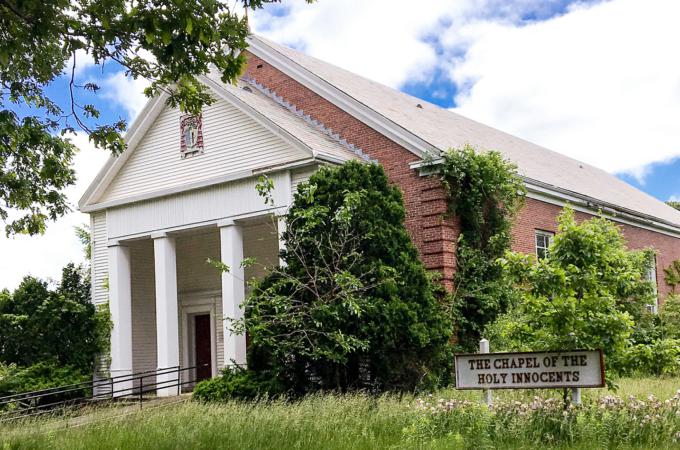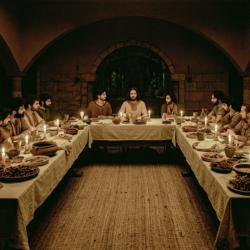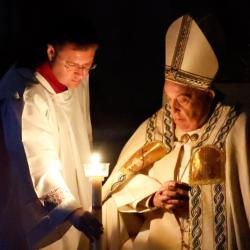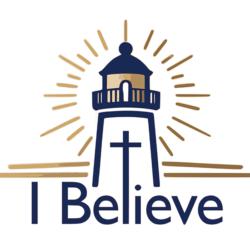After the 'Holy Innocents' go: The closing of a church and the end of an era in Massachusetts
When Helen Cushman describes the Chapel of the Holy Innocents, vibrant Sunday worship services come to life. "The cacophony in the building was just incredible," recalls the longtime volunteer. Today, her memories are all that remain of a once-bustling house of worship, built to serve patients at the Walter E. Fernald Developmental Center in Waltham, Mass. Shuttered in 2014, the church now sits empty, abandoned to the silence of a sprawling 196-acre campus.
A wheelchair ramp crumbles at the entryway. Vines and shrubs obscure the ornate stained glass windows. The Stations of the Cross hang ajar on the interior walls. The chapel, sanctioned by Boston's Cardinal Richard Cushing in 1960, stands as a marker of changing beliefs about how best to care for the developmentally disabled in America.
Founded in Boston in 1848 by renowned reformer Samuel Gridley Howe, the Fernald Center was the first public institution in the Western Hemisphere devoted to the care and treatment of people with developmental disabilities. The institution's original name -- the Massachusetts School for Idiotic and Feeble-Minded Youth -- sounds callous and offensive today, but its supporters at the time were high-minded reformers, determined to help children with disabilities to receive an education.
From its inception, religion was an ever-present facet of the institution. The constitution and bylaws of the school called for a board of visitors, which included not only the political leadership of the Commonwealth, but also the chaplains of the Senate and the House of Representatives. For patients there were also "daily devotional exercises," with the two most advanced classes gathering in a Sunday school.
By the late 19th century, school officials were looking for a new campus to accommodate a deluge of applications for admission. They settled on the spacious farmland of north Waltham, nine miles west of Boston, and in subsequent decades, the school grew rapidly. Under the direction of Howe's successor, Dr. Walter E. Fernald, worship services continued, and were offered to a community of patients who were increasingly held inside the institution for the entirety of their lives.
Chaplains held services in various buildings until the late 1950s when discussions to construct a chapel at the school first began. The effort was led by Cardinal Cushing, who wished to provide greater religious support for the developmentally disabled. His efforts proved successful, and the Chapel of the Holy Innocents opened in December 1960. It would be one of six such chapels built within the Archdiocese of Boston during his tenure, and it was designed specifically to serve the patients. For instance, pews stopped far short of the altar, providing an open floor space that welcomed patients confined to wheelchairs and stretchers to the front of the nave.
An active religious community soon formed around the chapel, not only for patients, but also for people in the wider community. In a given week, the church soon hosted services for Roman Catholic, Greek Orthodox, Protestant, and Jewish patients, with participants joining in worship from the residential neighborhood around the school as well. Nearby community churches took notice of the chapel, sending volunteers to donate time and services.
For patients, the presence of the church marked a notable shift in life at the Fernald. Prior to the building of the chapel, local parishes would transport patients from the campus to other parish churches and back. Once the chapel opened, volunteers and families came to the Fernald instead, helping patients cross the much less intimidating distance to the chapel from their residential buildings in comfort.
Cushman was one of those volunteers and also the sister of a Fernald resident. She visited often, while also becoming a leader of the religious education program at St. Bernard Parish in nearby Concord. Of the vibrant services, she remembers the singing most of all. "The priest would say, 'Oh what a wonderful day of singing today is.' And you and I would not recognize that as singing, but it was singing and it was celebrating."
While the church became an increasingly vibrant center of life at the Fernald, the broader trend of community involvement that it represented also signaled the decline of the state's vast network of institutional care facilities. Scandals involving the abuse of patients hastened the demise of the Fernald, which was taken over by the courts in the 1970s.
Worship was one of the few parts of daily life to continue on, uninterrupted, into 2014 when the remaining few patients were moved and the Fernald closed its doors after 166 years in operation. The city of Waltham purchased the property and the archdiocese officially relegated the chapel property to profane use. Unlike other church closures in recent years, the community around the Chapel of the Holy Innocents has also disappeared, dispersed across the state in residential homes and facilities.
What the future holds for the chapel is unknown, but the memory that lives on for Helen Cushman is one worth hearing. Her recollections breathe life back into the walls. "That place had to be rocking, and it had to be loud, and it had to be totally off key, but with all the love and adoration that God wants."
ASHLYNN RICKORD IS A GRADUATE STUDENT AT HARVARD DIVINITY SCHOOL AND ALEX GREEN IS A WRITER AND RESEARCH ASSOCIATE AT HARVARD BUSINESS SCHOOL.



















